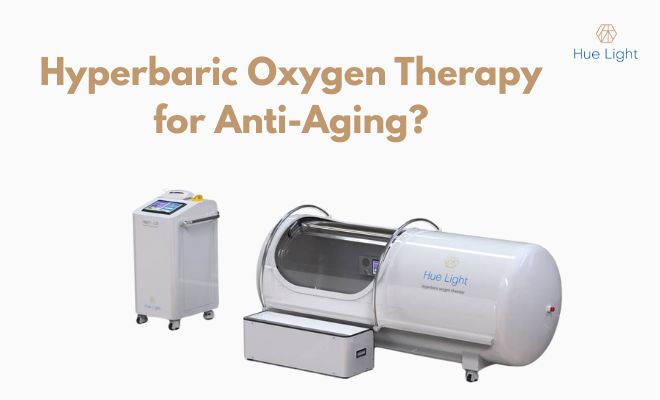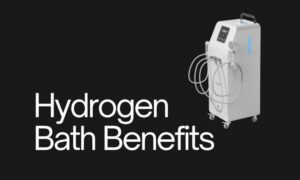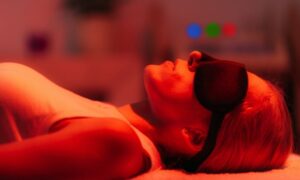We’re living in the age of proactive health. People aren’t just trying to live longer. They want to live better, with more energy, sharper minds, and youthful vitality well into their later years. And hyperbaric oxygen therapy (HBOT) is helping people achieve this.
Once reserved for wound healing and scuba divers with decompression sickness, HBOT is now making its way into elite longevity clinics, performance recovery centers, and even home wellness routines. The reason? Emerging research shows it may support skin health, cognitive performance, energy production, and even cellular aging.
But as HBOT becomes more available, one critical question keeps coming up:
How often should you do it to see real anti-aging benefits without unnecessary risk or wasted effort? Let’s break down the science, protocols, and real-world insights.
How HBOT Supports Anti-Aging: The Science Behind the Hype
HBOT’s anti-aging benefits stem from its ability to enhance the body’s natural repair systems. By flooding tissues with oxygen, it triggers a cascade of regenerative processes. Here’s a closer look at how it works:
1. Cellular Regeneration: Rebuilding From the Inside Out
One of HBOT’s primary benefits is its ability to stimulate repair at the cellular level. How?
- Stem Cell Mobilization: HBOT increases the number of circulating stem cells, which can migrate to areas of damage or degeneration and help with tissue regeneration.
- Angiogenesis (New Blood Vessel Growth): Improved oxygenation triggers the formation of new capillaries, enhancing nutrient delivery and tissue oxygenation.
- Collagen and Skin Repair: HBOT upregulates fibroblasts, the cells responsible for collagen synthesis: key for improving skin elasticity, texture, and wound healing.
This supports smoother, more resilient skin, better recovery from injury, and overall tissue rejuvenation.
2. Mitochondrial Health: Powering Your Cells
Mitochondria are the energy generators inside your cells. As we age, our function declines, contributing to fatigue, inflammation, and chronic disease.
HBOT:
- Stimulates mitochondrial biogenesis (the creation of new mitochondria)
- Enhances ATP production (your cell’s main energy currency)
- Reduces reactive oxygen species (ROS) when dosed properly, thereby improving metabolic function without increasing oxidative damage
This results in greater energy, improved metabolic flexibility, and reduced cellular stress, all of which contribute to aging more gracefully.
3. Neuroplasticity and Cognitive Function: A Sharper Brain at Any Age
Hyperbaric Oxygen Therapy (HBOT) has been shown to significantly enhance brain function by increasing blood flow to the brain, supporting the growth of new neurons (a process known as neurogenesis), and strengthening the connections between different regions of the brain. These changes help the brain work more efficiently and communicate more effectively.
In older adults, this often translates into noticeable improvements in memory recall, sharper attention, better focus, and faster processing speed, making HBOT a promising therapy for cognitive support and brain aging.
A 2015 Israeli study on healthy adults aged 64+ found that 60 sessions of HBOT led to significant gains in cognitive performance, especially in memory and executive function.
4. DNA Repair and Telomere Length: The Deepest Layer of Aging
One of the most exciting findings comes from a 2020 study published in Aging, where HBOT was shown to:
- Increase telomere length by up to 20–38% (telomeres are protective caps at the ends of chromosomes that shorten with age)
- Reduce senescent cells (those dysfunctional “zombie cells” that contribute to inflammation and aging)
These findings suggest HBOT doesn’t just improve how you feel; it may be capable of slowing or partially reversing biological aging at the DNA level.
Related Article: Hyperbaric Oxygen Therapy for Parkinson’s disease
How Often Should You Do HBOT for Anti-Aging?
The ideal HBOT schedule depends on your health goals, current condition, and whether you’re using a clinic-based or at-home chamber. While research gives us general guidelines, it’s important to tailor the plan to your individual needs. Here’s what studies suggest about how often to do sessions, how long they should last, and how many are typically needed.
General Protocols Based on Current Research
- Session frequency: 5 sessions per week
- Total sessions: 30–60 (spanning about 6–12 weeks)
- Duration per session: 60–90 minutes
- Pressure range: 1.5–2.0 ATA
These are the same parameters used in clinical studies reporting neurocognitive improvements, better vascular function, and telomere extension.
Maintenance vs. Intensive Protocols
Initial Intensive Phase:
- Goal: Cellular reset, stem cell activation, and mitochondrial repair
- Protocol: 20–40 sessions over 4–8 weeks
- Who it’s for: First-time users, or those addressing early signs of cognitive or physical decline
Maintenance Phase:
- Goal: Sustain and build on benefits
- Protocol: 1–2 sessions per week or 2–4 per month
- Who it’s for: People with post-intensive protocol or those maintaining long-term health
This mirrors how athletes train in cycles—you can’t sprint all the time, but you need consistent effort to stay in shape.
Mild HBOT (mHBOT) at Home: What to Expect
For those who prefer home-based options, mild HBOT chambers (soft-shell, ~1.3 ATA with oxygen concentrator) offer a gentler but more frequent route.
- Typical use: 3–5 times per week
- Duration: 30–60 minutes
- Pressure: ~1.3 ATA
- Benefits: Reduced inflammation, improved sleep, gradual cognitive clarity
Home units may require more sessions to achieve similar outcomes, but they can still be effective when used consistently over time.
Factors That Influence HBOT Frequency Needs
You’re not a lab subject, you’re a person with unique health needs. Your ideal HBOT schedule depends on:
- Age: Older individuals may need longer protocols to overcome accumulated oxidative damage.
- Health goals: Are you focused on skin, cognition, athletic performance, or long-term vitality?
- Baseline health: People with fatigue, inflammation, or post-COVID issues may benefit from a more aggressive start.
- Response to therapy: Are you sleeping better? Thinking more clearly? Adjust based on how your body responds.
- Budget and time: Let’s be real—HBOT isn’t cheap. That’s why maintenance sessions help extend the benefits without breaking the bank.
Safety and Side Effects of Frequent HBOT
When used appropriately, HBOT is very safe. But more isn’t always better.
Possible Risks (especially at high frequency or pressure):
- Oxygen toxicity: Too much oxygen for too long can cause seizures or lung irritation, but this is rare under medical protocols.
- Barotrauma: Discomfort or damage to the ears, sinuses, or lungs due to pressure changes.
- Claustrophobia: Especially in enclosed chambers, though many people adjust after a few sessions.
- Temporary fatigue or dizziness: Often due to changes in blood flow or oxygen metabolism.
Safety Tips:
- Always undergo a medical screening before starting
- Don’t self-administer intensive sessions without supervision
- If using at home, follow guidelines and track your body’s signals
Practical Guidelines for Healthy Adults
Here’s a sample roadmap if you’re using HBOT proactively:
| Phase | Protocol | Ideal For |
| Kickstart | 20–40 sessions over 4–8 weeks (1.5–2.0 ATA) | Initiating tissue/cognitive repair |
| Maintenance | 1–2 sessions/week or 2–4/month | Long-term vitality support |
| At-Home Use | 3–5 sessions/week at 1.3 ATA for 30–60 min | Gentle, consistent benefits |
Related Article: Hyperbaric Oxygen Therapy at Home
Book Your Hyperbaric Oxygen Therapy with Hue Light

At Hue Light, we make it easy to access premium, clinic-grade Hyperbaric Oxygen Therapy designed for anti-aging, recovery, and overall wellness. Our HBOT-130 Bed-Type Chamber delivers high-pressure, high-purity oxygen in a spacious and comfortable setting, ideal for both first-timers and seasoned biohackers.
Whether you’re looking to improve skin health, boost brain function, speed up recovery, or slow cellular aging, our therapy protocols are based on the latest science and personalized to fit your health goals.
Why Choose Hue Light?
- Medical-grade technology with advanced safety features
- Comfort-focused design for relaxing sessions
- Customized protocols tailored to your needs
- Proven results in cognitive performance, mitochondrial health, and longevity markers
Don’t just live longer; live better. Book your HBOT session today and take a breath toward a younger, more vibrant you.
Ready to experience the regenerative power of oxygen?













